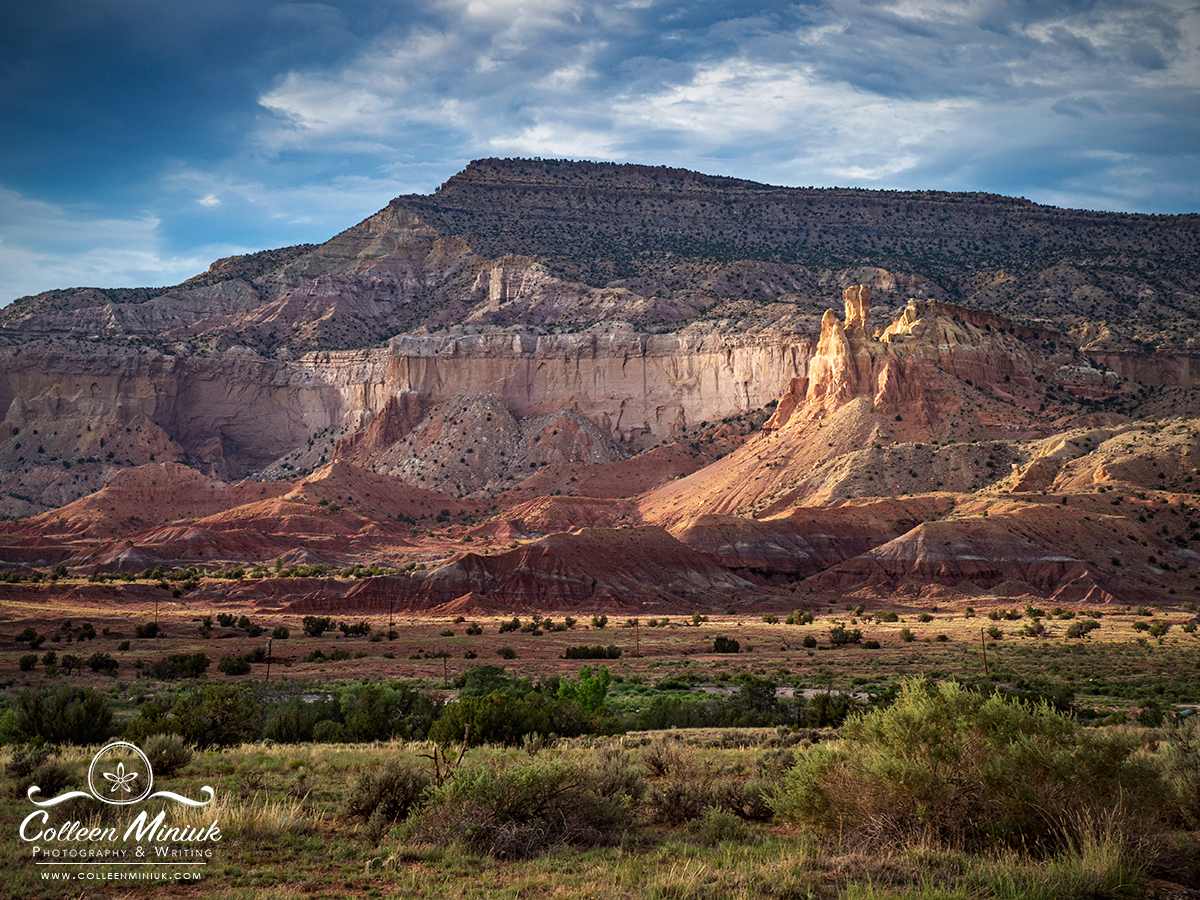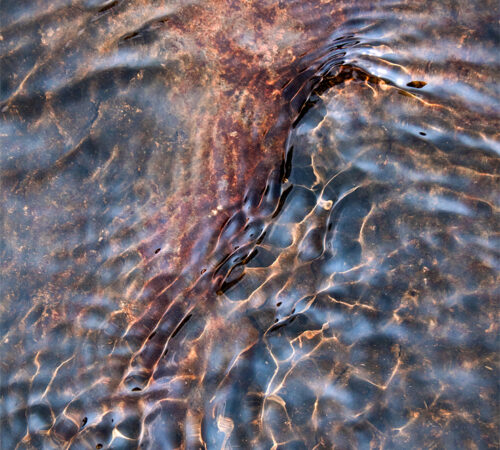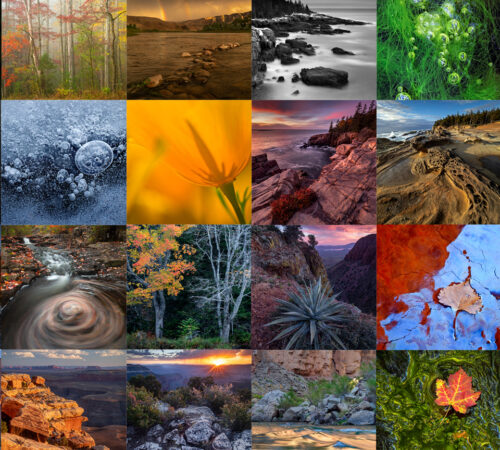Better Shot Than Mine

Dear Bubbles:
I have angst when I am taking a picture. I am always afraid other photographers see things I don’t or they have discovered a better spot than me. When I went to Grand Teton National Park, I wanted to get a really good photograph of the “Three Sisters.” I went early in the morning and later in the evening. I went to various locations. Then I saw this guy snapping a picture with his iPhone! Do you think he got a better photo than I did?
~Mark
Dear Mark,
Whelp, I haven’t seen either of your photographs to determine who made a “better” image. If I could analyze them side-by-side, I’d be able to evaluate the technical merits of each. I’d consider things like, is the image in focus? Is the image properly exposed for the lighting circumstances? Is the horizon straight? Given that information, I’d be able to tell who was able to make a technically competent photograph. Without knowing each photographer’s intent for their photographs, that’s about all I could tell you…and that isn’t much.
I might have a subjective preference for one photo over the other based on my own perceptions, tastes, and interests. I might not. Even so, it’s doubtful I could decisively say who made the “better” photograph. I can, however, authoritatively say he made a different photograph than you did. Besides, if you asked 100 viewers to decide who made a better photograph, you’d likely get 100 different answers, because we all see the world through a different lens. With so many opinions out there, then, who do you believe? The only opinion that counts: yours. Did you like the image(s) you made of the Three Sisters in the Grand Tetons? That’s what matters.
Here’s the thing: it benefits no one to make a “better than” judgment when it comes to art and photography. It’s an unnecessary and distracting exercise. You making a photograph you’re excited and proud about and someone else making an image they’re excited and proud about are not mutually exclusive events. In other words, we all can make successful, beautiful images at the same time—and they all be right answers. So you could have very well made a fabulous image of the Three Sisters in Grand Tetons while the guy in the parking lot with his iPhone could have made an equally fabulous image.
Comparing ourselves to others can give us a relative measure of how we’re doing but it’s hardly an accurate or reliable gauge. Is the person we’re comparing ourselves to a reasonable benchmark? What are rational expectations in the scope of our own development and our own path? And what does it matter if we’re better than (or worse than) some guy in a parking lot with an iPhone? It’s not like you’re going to get a trophy for it. This isn’t the Olympics. This isn’t even the Dear Bubbles Photography Contest. Self-expression is not a competition. We do not need to rank each other or declare one “better” than another when it comes to creativity. When we let social comparisons affect us (usually in negative ways like angst), it gives other people too much influence over our emotions, our behaviors, and our self-esteem. Don’t give away your power so easily. As Eleanor Roosevelt said, “No one can make you feel inferior without your consent.”
We don’t necessarily need to put blinders on to what other people are doing–it is a fine way to learn new things and pick up fresh ideas–but we can find more joy and fulfillment when we invest most of that energy into our own work. I mean, who among us got into photography to experience anxiety? Photography is supposed to be fun, right?!
So what can we do to release that pressure, fear, and worry?
Stop trying to keep up with the Jones’: It is a natural tendency for humans to think the grass is greener in our neighbor’s perfectly manicured yard. This attitude only leads to frustration—it never makes life better or easier for us. To overcome this, remember that every person on this planet is on a unique, individual path and doing the very best they can given their unique circumstances. Even if we walked in someone else’s footsteps for a while, we could not replicate what they experience or photograph. Why would you want to be a copy of someone else anyhow? Let the Jones’ be the Jones’. You be you. Given the number of people inhabiting this planet and practicing photography in all the different ways (including iPhoneography), there will always be people who are farther along in their journey than you. There will also be those who are not as far along as you are. Don’t judge your current state in photography based on where other people are at with theirs. You are good enough already (and tell the voices in your head telling you otherwise to shut up). In the pursuit of self-improvement, the only person we need to be better than is the person we were yesterday. Celebrate and take pride in your own progress.
Replace the “fear of missing out” (FOMO) by embracing the “joy of missing out,” or JOMO. I hate to break it to you, but regardless of whether there are photographers lurking about in the same location as you or you’re alone, you are missing a gazillion or more other absolutely amazing photographs when you decide to frame a certain composition. Are they better than what you have settled on? Maybe. Maybe not. Instead of focusing on what you’re not getting, pour your heart and soul into what you are getting. Other photographers are seeing things you don’t and have discovered places you haven’t yet. That’s nothing to fear. That’s a reality. That’s happening ALL THE TIME. Celebrate that you see things that they don’t. Celebrate your accomplishments in the field. It only takes a small attitude shift to be happy for and confident in what you have and not sad for what you lack.
Release expectations of making an image: I no longer venture into a location with the expectation of making an image. I no longer go on photo shoots. I go on some adventure—a hike, a paddle, a quest to see what’s on top of the hill—and my camera simply comes along with me. Sometimes I make a bunch of images. Sometimes I make none. Both end states are A-OK with me. I realize this is challenging when you have 10 minutes in a location that you’ve spent thousands of dollars get to. I’ve been there before. When I was employed at Intel, I’d try to see and photograph as much as could possibly shove into a two-day weekend. I’d get lucky and make a decent photograph now and then, but trying to force a photograph in a “stop-at-an-overlook-then-get-out-of-the-car-and-hurry-up-and-snap-an-amazing-picture-before-my-favorite-song-on-the-radio-ended” approach never worked for me. I no longer approach my photography that way—and I realize I am in a fortunate position where I do not have to. I have the time and freedom to spend extended periods of time in the wild where I can explore not just the location, but my connection with it as well, in a more meaningful way. (I should mention that I do take vacation “happy snaps” with no expectations the resulting image is anything more than an “I was here” moment.) What does this mean for people who are holding down a full-time job and photographing on weekends? Consider why you’re a photographer in the first place—what’s drawing you to the outdoors? Are your expectations of making expressive images in a super condensed period of time reasonable? What could you do to make your photography experiences more enjoyable?
Embrace an autotelic personality: If you are to have any expectations for yourself and your photography, let it be to enjoy the present moment exactly as it is, have fun, and to learn something new about a place, yourself, others, and/or the world around you—not on “getting the shot.” Merriam-Webster defines “autotelic” as “having a purpose in and not apart from itself.” What was it about the Three Sisters and the Grand Tetons that impressed you enough to travel there? The geology? The flora and fauna? Maybe a climbing story by an earlier adventurer? What did you see at your various locations and in different lighting conditions when exploring the Three Sisters? It’s great to hear you explored the park from different angles and different lighting conditions. That’s an effective way of learning more about your surroundings and expanding your experience beyond photography. Then make an image. Or don’t. Regardless of whether you made an image, in the end, you will have enjoyed and improved yourself. That’s what counts.
Pay attention to what your paying attention to: I walk around a location with the simple goal of paying attention to my surroundings, noticing details with all of my senses, not just my sight. A broader sensory experience can stimulate deeper connections through our memories and perceptions. It is not until I lose all two marbles in my brain over something (e.g. bubbles in water) that I decide to pull my camera out and start visualizing a composition. Liking a subject and falling in love with a subject are two very different levels. Sometimes I bypass a lot of “likes” to get to the things I love. Using mindfulness to guide your decision to make an image takes patience but when you’re able to communicate such excitement and emotion through a photograph and with the outside world, I can tell you it is well worth the wait.
Focus on how well you develop and deliver your visual intent through your image: Rather than compare your image to others, ask yourself whether you were able to visualize an idea and effectively bring it to life through the camera. Your intended message will drive where you stand, how high (or low) you set your tripod up, what lens to use, what aperture to set, etc.—it won’t have anything to do with where other people are standing with their own camera. Identify your shortcomings and weaknesses in achieving this in an objective manner. Address them by learning, growing, and practicing until you have faith and confidence in your abilities to execute your own vision. If you are able convey in a photograph what you experience in the world, you are successfully delivering your own voice. And you’re the only one on this planet with that voice. There is no comparison.
Get comfortable with people not liking your images: Since we all look through such different lenses, you will never be able to satisfy everyone’s tastes—and if you try, you’ll likely end up satisfying no ones, including your own. It’s OK if people don’t like your photographs. Create photographs because they bring you joy, because they mean something to you, because your experience matters to you. If someone “out there” in the world likes your photographs, great. If not, great. I’ve said it before, and I’ll say it over and over again: what people think of your photographs is none of your business.
Be well, be wild,
~Bubbles
Have a question about photography, art, and/or the creative life? Need some advice? Looking for inspiration? Send your question to Dear Bubbles at colleen@colleenminiuk.com to be possibly featured in a future column post. (If you’d prefer a different display name than your real first name, please include your preferred nickname in your note.





One Comment
Lori Ryerson
I wonder…who is it who determines that His was the “Better Shot”? Are those people you respect, or are you just basing the determination on the volume of likes and hearts? In this Brave New World, we live in a strange environment where we often value the opinion of strangers rather than trusting our own instincts (please see Amazon reviews). And in that valuation of “likes” versus critical opinion, how much time did They (those people whose critical opinion you are valuing) spend on your image? There are over 95 million Instagram posts uploaded every day, not including Stories. How much time do you think your image was given by these influencers, and how sure are you that they saw the two of them side by side? Image Envy is definitely a thing, but only when we let it be so. No one photographer gets ALL the really GOOD images. My experience is that there are usually at least one or two left over for the rest of us, in every single situation.